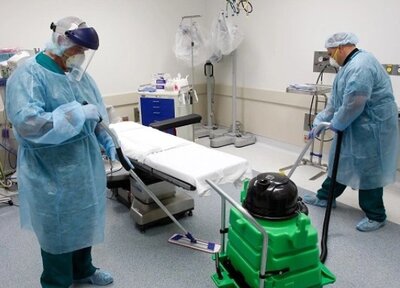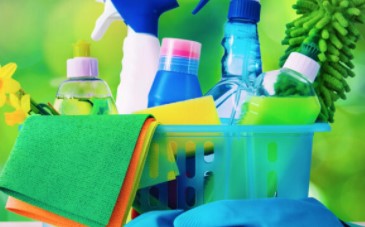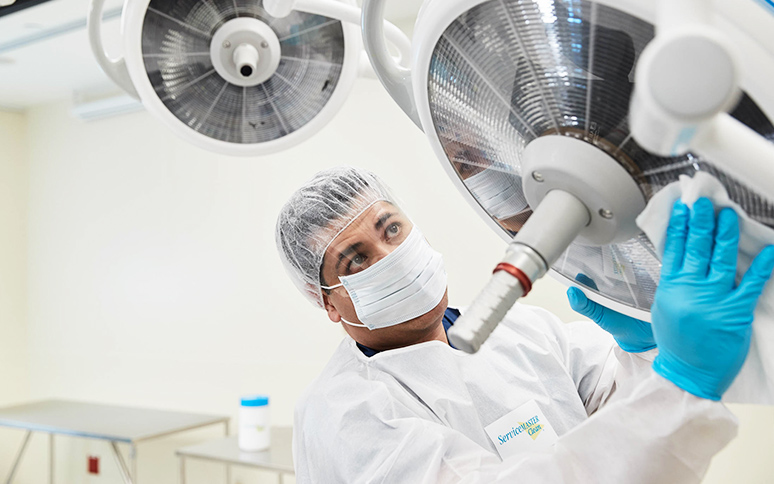How Long Can HAIs and MDROs Live on a Surface?
At a healthcare facility, keeping surfaces clean and germ-free is about more than just maintaining a tidy and attractive place for your patients, their visitors, and your employees. Healthcare-associated infections (HAIs) and multi-drug resistant organisms (MDROs) make consistent cleaning and disinfecting of surfaces an urgent public safety issue. Read these tips from the experts at ServiceMaster Clean to find out what HAIs and MDROs are, how long they live on surfaces, and how you can help prevent spreading them at your facility.
What Are HAIs?
Healthcare-associated infections, or HAIs, are infections that patients acquire at a healthcare facility while receiving treatment for something else. According to the Centers for Disease Control and Prevention (CDC), about one in 25 hospital patients in the United States gets an HAI every day. HAIs can be extremely dangerous, especially to patients who may have a weakened immune system or another condition that makes fighting an infection difficult.
Some common HAIs patients are at risk for include:
Pneumonia
Surgical site infections
Urinary tract infections
Clostridium difficile (also known as “C. diff”) infections
Central-line associated bloodstream infections (CLABSI)
Methicillin-resistant Staphylococcus aureus (MSRA) infections
What Are MDROs?
Multi-drug resistant organisms, or MDROs, are any type of bacteria that has become resistant to common antibiotics. Their resistance to treatment can make them hazardous to your staff and patients, making it crucial that you limit their risk of spreading throughout your hospital.
How Are HAIs and MDROs Transmitted?
Both HAIs and MDROs can be transmitted directly and indirectly. If someone has an infection and touches a surface, others who touch that surface later are at risk of getting infected. That's why regularly cleaning and disinfecting surfaces is crucial to helping maintain a healthy environment.
How Long Do HAIs and MDROs Live on Surfaces?
In terms of how long HAIs and MDROs can live on surfaces, there is no straight answer. According to the CDC, some bacteria can live for weeks on a surface if it isn't cleaned and disinfected properly. That means that all staff and patients passing through the area are at risk of getting infected until the area is sanitized and/or disinfected, as appropriate.
Different factors also determine how long viruses and bacteria can live outside of the body. For example, temperature, humidity, and even hard versus soft surfaces have an impact on how long pathogens remain contagious on that surface.
How to Help Prevent the Spread of HAIs and MDROs
There are many things you can do to help protect your patients from HAIs. The first step is simple: wash your hands often. Staff members who care for the patient should also change their gloves, gown, and mask before moving to the next patient.
Disinfecting surfaces is also key to helping control the spread of HAIs and MDROs. Surfaces that are close to patients and frequently touched need to be disinfected regularly, including bed railings, food trays, door knobs, light switches, and bathrooms surfaces.
Keeping your facility disinfected is a serious job. While your staff should disinfect surfaces throughout the day, it's also crucial to have a professional cleaning team disinfect your entire facility regularly. If you need help properly disinfecting your healthcare facility, call the professionals at ServiceMaster Clean. Our patient-centered cleaning program includes expert knowledge and innovative tools to clean, sanitize, and disinfect your facility in order to keep your patients and staff safe.










